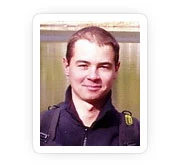Balancing Forces in Yoga Practice: Forearms, Wrists and Hands in Dog Pose

A starting point for combining Western science with yoga lies in the term Ha/Tha. This Sanskrit word means Sun/Moon or Yin/Yang and implies a balancing of energies or forces. Balance creates stillness. Apply this concept in your yoga practice by examining the various forces operating around a given joint in a pose, for example, the feet and ankles in Adho Mukha Svanasana (Downward-Facing Dog Pose). You can also use it to correct hyperextending knees and elbows.
So, look at the elements that contribute energy or force throughout the body—including gravity and muscular effort—and the transmission of those forces from the muscle-tendon unit to the bones. Focus on those you can consciously affect, contracting and lengthening skeletal muscles, for example. In general, once you have the form of a pose, you want to minimize the muscular effort required to be in the asana and maximize the use of the inherent strength of the bones by aligning them. For an example of this, look at how to use the big toes to align the bones of the legs in Uttanasana.
What about poses where a particular movement predominates, for example, in Urdva Dhanurasana (Upward Bow Pose) where the hip joints are more extended than flexed? Consider a recipe for food: You wouldn’t necessarily use equal portions of salt and pepper to create the final taste. In Urdva Dhanurasana, contraction of the hip extensors predominates while the hip flexors lengthen. Balance in a pose such as this is the right amount of engagement combined with the right amount of release. All of this produces a motor and sensory imprint on the brain and establishes the mind-body “connection” of yoga.
Now, let’s look at how to use this principle for the forearms, wrists, and hands.

(Figure 1 Close-up of pronator quadratus and flexor carpi radialis.)

(Figure 2 Forearm pronators in Dog Pose.)
Try This in Downward Facing Dog Pose
-
Gently press the mounds at the base of the index fingers into the mat and slightly flex the wrists. This engages the muscles that “pronate” the forearms or turn the palms to face down—the pronators teres and quadratus and the flexor carpi radialis.
-
Then spread the force evenly across the palms to the little finger sides of the hands. This contracts the muscles that “supinate” the forearms, or turn the palms to face up—the biceps and supinator. Gently attempting to drag the hands towards one another activates the biceps.
-
You can refine supination by extending the thumbs up and away from the mat for a moment and then laying them back down. This engages the extensor pollicis longus. Feel how these actions balance the energies of the forearms, wrists, and hands.
-
Try this concept in other poses such as Adho Mukha Vrksasana (Handstand Pose) and Urdva Dhanurasana.

(Figure 3 Close-up of biceps brachii and supinator.)

(Figure 4 Forearm supinators in Dog Pose.)

|
An excerpt from “Yoga Mat Companion 4 – Anatomy for Arm Balances and Inversions” |
More yoga practice tips, this time in a course from YogaUOnline and Anita Boser – Youthful Spine, Youthful Body: The Role of Fluidity in Healthy Aging.
Read more from Dr. Ray Long on yoga anatomy & asana practice tips – Lengthening the Torso in Forward Bends.
Reprinted with permission from Daily Bandha.
 Author Ray Long MD FRCSC is a board-certified orthopedic surgeon and the founder of Bandha Yoga. Ray graduated from The University of Michigan Medical School with post-graduate training at Cornell University, McGill University, The University of Montreal and Florida Orthopedic Institute. He has studied hatha yoga for over twenty years, training extensively with B.K.S. Iyengar and other leading yoga masters.
Author Ray Long MD FRCSC is a board-certified orthopedic surgeon and the founder of Bandha Yoga. Ray graduated from The University of Michigan Medical School with post-graduate training at Cornell University, McGill University, The University of Montreal and Florida Orthopedic Institute. He has studied hatha yoga for over twenty years, training extensively with B.K.S. Iyengar and other leading yoga masters.
 3d Graphic Designer / Illustrator Chris Macivor has been involved in the field of digital content creation for well over ten years. He is a graduate of Etobicoke School of the Arts, Sheridan College and Seneca College. Chris considers himself to be equally artistic and technical in nature. As such his work has spanned many genres from film and television to video games and underwater imagery.
3d Graphic Designer / Illustrator Chris Macivor has been involved in the field of digital content creation for well over ten years. He is a graduate of Etobicoke School of the Arts, Sheridan College and Seneca College. Chris considers himself to be equally artistic and technical in nature. As such his work has spanned many genres from film and television to video games and underwater imagery.



